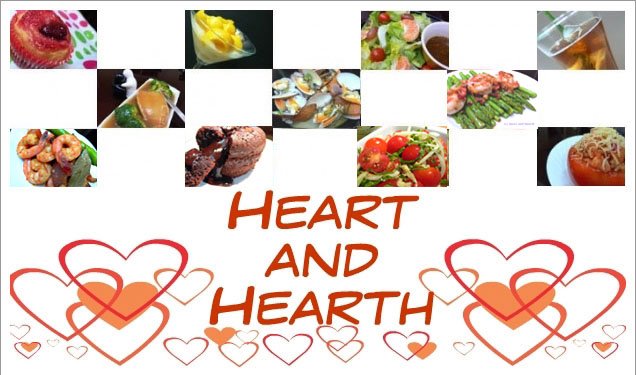 Jonathan Swift once said, "He was a bold man that first ate an oyster." Actually, I was thinking how smart a man was he who first ate an oyster. How could he have imagined that a succulent, tasty delicacy lived inside those ugly, and hard-to-open shells? Or maybe Mr Swift was referring to the man who first dared to eat raw oysters. But then, maybe during those times, the people were used to eating other kinds of mollusks? I know many people nowadays are squirmish about eating raw oysters. But these people have valid reasons. Our seas are indeed becoming polluted, and we are not sure where our oysters come from. In the city, we are also not sure if the oysters are still alive and fresh when served on our table. So, people nowadays prefer them cooked.
Jonathan Swift once said, "He was a bold man that first ate an oyster." Actually, I was thinking how smart a man was he who first ate an oyster. How could he have imagined that a succulent, tasty delicacy lived inside those ugly, and hard-to-open shells? Or maybe Mr Swift was referring to the man who first dared to eat raw oysters. But then, maybe during those times, the people were used to eating other kinds of mollusks? I know many people nowadays are squirmish about eating raw oysters. But these people have valid reasons. Our seas are indeed becoming polluted, and we are not sure where our oysters come from. In the city, we are also not sure if the oysters are still alive and fresh when served on our table. So, people nowadays prefer them cooked.Fresh oysters are truly a treat - with a hint of sweetness, 'fresh from the sea' taste. Simply dipped in lemon juice or chili vinegar, oysters are soft, fleshy and heavenly. Here in the Philippines, with our seven thousand plus islands, oysters are bountiful. Fresh oysters are often flown in from the coastal provices to the city.
Oysters are one of my favorite foods. And I know that this shellfish is a rich source of zinc, one of the minerals required for the production of testosterone. So, it is considered as an aphrodisiac by many. A little googling showed that oysters are one of the most nutritionally well balanced of foods, containing protein, carbohydrates and lipids. The National Heart and Lung Institute suggest oysters as an ideal food for inclusion in low-cholesterol diets. Oysters are an excellent source of vitamins A, B1(thiamin), B2 (riboflavin), B3 (niacin), C (ascorbic acid) and D (calciferol). Four or five medium size oysters supply the recommended daily allowance of iron, copper, iodine, magnesium, calcium, zinc, manganese and phosphorus. (source:globalgourmet.com) If you want to know more tidbits about oysters, please click here.
If you are one of those people who are not comfortable eating raw oysters, then this recipe is for you. This is an easy-to-do dish that my grandma taught me. You just mix everything up and the cooking time is not long.
1/2 K shelled fresh oysters, washed, drained
3 eggs, well beaten
1 small ginger, grated
1 onion, minced
4 T garlic, minced
100 gms mung bean sprouts, optional
1 stalk spring onion, chopped
5 T flour
salt and ground pepper to taste
A little cooking oil to coat pan for cooking
1. Mix all the ingredients together in a bowl, adding the beaten eggs last. Mix well to coat all ingredients evenly with the beaten egg mixture.
2. Heat up a skillet or wok. Put some amout of oil and swirl the pan to spread the oil.
3. When oil is hot, add around 1/3 to 1/2 of the oyster mixture to the pan. Spread evenly. The amount depends on the size of your skillet and how thick you want your omelette to be. of course the thicker it is, the longer it will take to cook.
4. Lower fire. When the edges get a little brown, (only a few minutes!) turn to omelette to cook the other side. I usually do not want to overcook the omelette or the oysters will become smaller. So, I check the doneness all the time.
5. Do the same with the remaining oyster mixture.
 This dish and its featured calcium and minerals-rich Oyster is my entry to Beautiful Bones event, launched by Susan, the Food Blogga, herself a victim of osteoporosis. Osteoporosis is a disease where bones are fragile and likely to break. My mother-in-law also has osteoporosis. This is because since she was a girl, she does not drink milk nor eat those food which are rich in calcium. (She is a vegetarian.) Now, she has learned to choose vegetables which are rich in calcium.
This dish and its featured calcium and minerals-rich Oyster is my entry to Beautiful Bones event, launched by Susan, the Food Blogga, herself a victim of osteoporosis. Osteoporosis is a disease where bones are fragile and likely to break. My mother-in-law also has osteoporosis. This is because since she was a girl, she does not drink milk nor eat those food which are rich in calcium. (She is a vegetarian.) Now, she has learned to choose vegetables which are rich in calcium.
May is the National Osteoporosis Awareness month, and I am honored to be a part of this event that aims to alert women to the potential risks of osteoporosis and encourage them to take steps to protect their bones at every age.

Hello Ning,
ReplyDeleteJonathan Swift was a pretty clever guy, wasn't he? ;)
I love that you chose to feature oysters. I think a lot of people (including me) associate them with cold bars at restaurants. So it's really helpful to have this delicious recipe to make at home.
Please give my best wishes to your MIL as well.
Cheers,
Susan